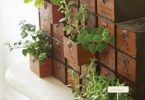 Text by Lori Broadfoot
Text by Lori Broadfoot
Whether you have been gardening, the same plot of land for years or haven’t yet sunk a spade into the earth, having your soil tested can give you and your plants a great advantage.
A standard soil test will reveal the present levels of key nutrients: phosphorous (P), potassium (K), calcium (Ca) and magnesium (Mg); the pH level – whether the soil is acidic, neutral or alkaline; and saturation levels, i.e. how well the soil will hold moisture. Additional tests may also determine the presence of trace minerals, iron, zinc, manganese, soluble salts and nitrates.
Mineral nutrients are removed from soil merely as a result of plant growth, and certain elements can be leached from the ground by regular watering. Levels of some elements may be imbalanced through routine additions of mulch, compost, and other organic substances. Certain elements become less available to plant roots when the pH level is raised and a low pH level can elevate manganese to toxic levels for some plants. Testing soil regularly, every three or four years is recommended, will reveal which additives or fertilizers may be required for optimal fertility and growth.
Soil samples can be gathered in either the spring or fall, with spring being the most common, as most gardeners’ enthusiasm to prepare their beds for the coming planting season rises with the length of the days. If you suspect you may have to alter the pH of your soil, fall is the preferred time to test your soil, so that necessary additions can be made at the proper time. Lime, used to raise the pH, is more effectively added in the fall, and sulphur, to lower the pH, should be applied in the spring.
University agricultural science departments offer information on soil testing services, and many will perform the testing in their labs. You may purchase a do-it-yourself test kit, but the results may only reveal general levels of major components and pH, and the accuracy is dependant on your own interpretations of various colour readings. If you want more than just a general assessment of your soil fertility, a test conducted by a qualified lab will give more definite interpretations and may also include recommendations specific to your growing plans. A lab will also take historic data into consideration when making an assessment, and will use information on existing plants, as well as any fertilizers or additives you have applied in the past.
To obtain an accurate reading of the quality of your soil you must first collect an effective soil sample. Remove any surface debris, mulch or thatching and dig into the soil at least six to eight inches in garden beds and around trees and shrubs. Lawns need only a sample three to five inches below the sod surface.
Sample the soil from each area of your garden separately – a lawn, vegetable garden and perennial bed will all have different characteristics. Also create a separate sample for any planting areas that feature different drainage, or other factors. Use a trowel, spade or specialized soil probe to retrieve several small samples of earth a few feet apart in a given area. Place the dirt in a clean plastic pail and mix thoroughly but do not touch the sample with your hands. Allow to air dry before scooping out the amount to be used for testing.
Follow the instructions for your test kit, or submission requirements for a lab, to the letter, and you will gain valuable information about the specific needs and attributes of the earth in your garden.
Your plants will benefit, and you will save money and effort from making only necessary and accurate soil amendments.
Latest posts by Canadian Home Trends (see all)
- Dining Room Design Tips - July 13, 2025
- Practical Luxury in Forest Grove - July 13, 2025
- The Hidden Value of Great Design - July 13, 2025






